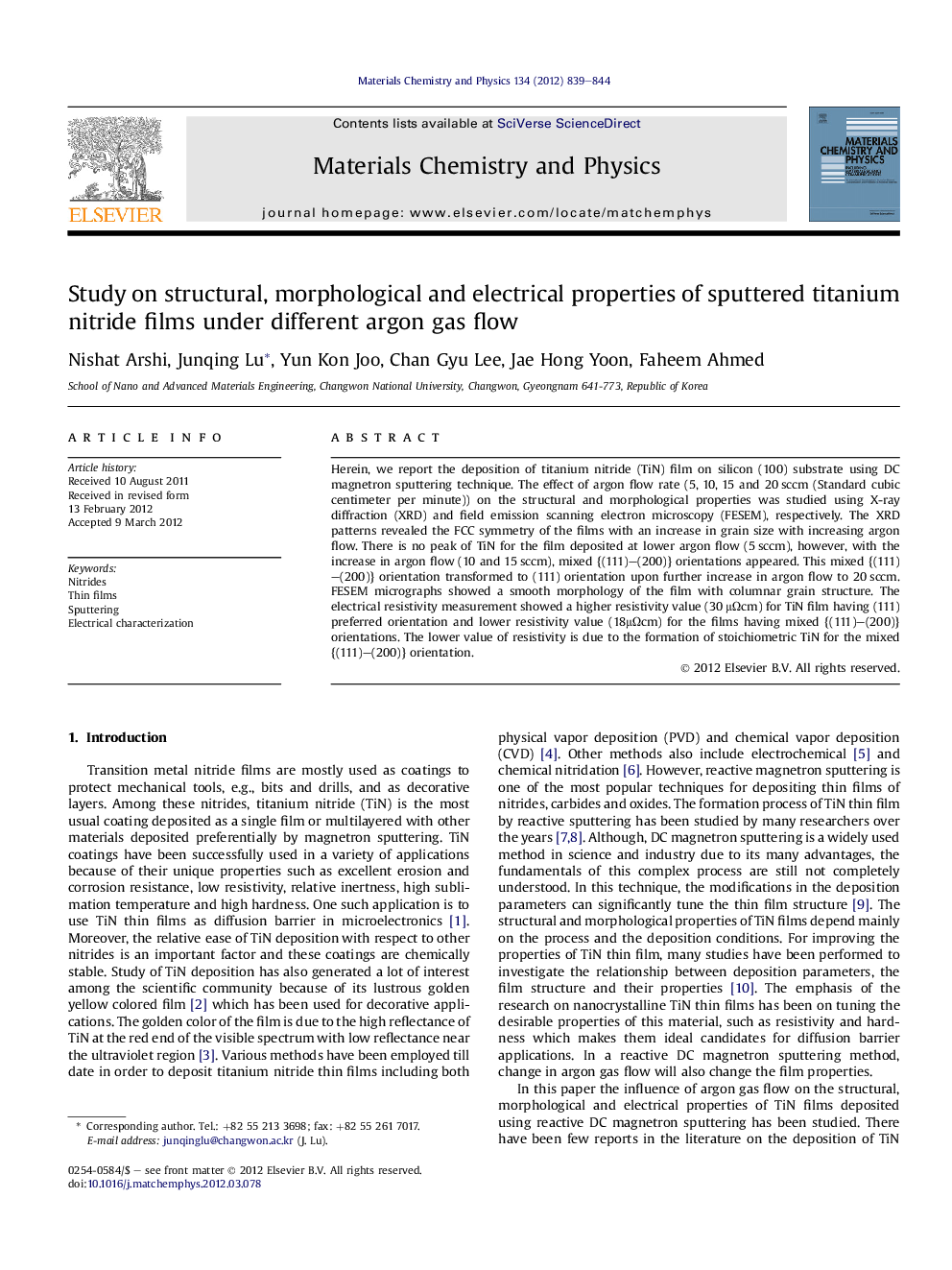| Article ID | Journal | Published Year | Pages | File Type |
|---|---|---|---|---|
| 1522999 | Materials Chemistry and Physics | 2012 | 6 Pages |
Herein, we report the deposition of titanium nitride (TiN) film on silicon (100) substrate using DC magnetron sputtering technique. The effect of argon flow rate (5, 10, 15 and 20 sccm (Standard cubic centimeter per minute)) on the structural and morphological properties was studied using X-ray diffraction (XRD) and field emission scanning electron microscopy (FESEM), respectively. The XRD patterns revealed the FCC symmetry of the films with an increase in grain size with increasing argon flow. There is no peak of TiN for the film deposited at lower argon flow (5 sccm), however, with the increase in argon flow (10 and 15 sccm), mixed {(111)–(200)} orientations appeared. This mixed {(111)–(200)} orientation transformed to (111) orientation upon further increase in argon flow to 20 sccm. FESEM micrographs showed a smooth morphology of the film with columnar grain structure. The electrical resistivity measurement showed a higher resistivity value (30 μΩcm) for TiN film having (111) preferred orientation and lower resistivity value (18μΩcm) for the films having mixed {(111)–(200)} orientations. The lower value of resistivity is due to the formation of stoichiometric TiN for the mixed {(111)–(200)} orientation.
► Titanium nitride films with different argon flow rate have been deposited. ► Structural, morphological and electrical properties of these films have been studied. ► The XRD results revealed a change in orientation from mixed (111)–(200) to (111) only. ► FESEM results showed a smooth morphology of the film with columnar grain structure. ► The electrical resistivity was found to be lowest ∼18 μΩcm for stoichiometric TiN film.
